
Using the signal transduction pathway for the cholera toxin to understand activation and inhibition.
- Subject:
- Biology
- Life Science
- Material Type:
- Lesson
- Provider:
- Khan Academy
- Provider Set:
- Khan Academy
- Author:
- Sal Khan
- Date Added:
- 10/31/2018

Using the signal transduction pathway for the cholera toxin to understand activation and inhibition.

Understanding the structure of a skeletal muscle cell.. Created by Raja Narayan.
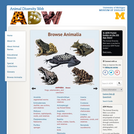
This site is a searchable encyclopedia of thousands of photos, descriptions, sound recordings, and other information about individual animal species. Find out about amphibians, arthropods, birds, fishes, insects, mammals, mollusks, reptiles, and sharks. Explore special features on mammals, skulls, and frog calls. Students are invited to contribute.

The purpose of this video lesson is to expand the student's knowledge about enzymes by introducing the antioxidant enzymes that are intimately involved in the prevention of cellular damage and eventual slowing of the aging process and prevention of several diseases. Students will learn that natural antioxidant enzymes are manufactured in the body and provide an important defense against free radicals. The topic of free radical action is introduced, covering how they are constantly generated in living cells both by ''accidents of chemistry'' and also by specific metabolic processes.

Binary fission, budding, mitosis, fragmentation, parthenogenesis and sexual reproduction.
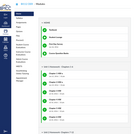
This course is designed to be taught using the textbook Cell Biology for Health Occupations, adapted from OpenStax.
(http://cnx.org/contents/Th3V8ojZ@3.1:zMTtFGyH@4/Introduction).

A grasp of the logic and practice of science is essential to understand the rest of the world around us. To that end, the CMB4e iText (like earlier editions) remains focused on experimental support for what we know about cell and molecular biology, and on showing students the relationship of cell structure and function. Rather than trying to be a comprehensive reference book, CMB4e selectively details investigative questions, methods and experiments that lead to our understanding of cell biology. This focus is nowhere more obvious than in the chapter learning objectives and in external links to supplementary material. The Basic CMB3e version of the iText includes links to external web-sources as well as the author’s short, just-in-time YouTube VOPs (with edited, optional closed captions), all embedded in or near relevant text. Each video is identified with a descriptive title and video play and QR bar codes.

This activity is designed to help students understand the structures and functions of the cell by building a model.
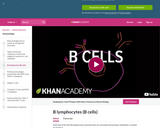
This 14-minute video lesson provides an overview of B cells (B lymphocytes) and how they are activated and produce antibodies. [Biology playlist: Lesson 53 of 71].

This 10-minute video lesson discusses how cytotoxic T-Cells get activated by MHC-I/antigen complexes and then proceed to kill infected cells. [Biology playlist: Lesson 56 of 71].

This 19-minute video lesson looks at diffusion and osmosis. [Biology playlist: Lesson 36 of 71].

This 13-minute video lesson provides an overview of glycolysis. [Biology playlist: Lesson 24 of 71].

This 21-minute video lesson provides an introduction to helper T-Cells and their role in activating B cells. [Biology playlist: Lesson 55 of 71].
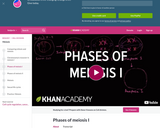
This 27-minute video lesson looks at the phases of Meiosis. [Biology playlist: Lesson 11 of 71].
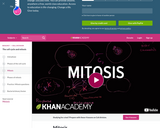
This 21-minute video explains the phases of mitosis. [Biology playlist: Lesson 10 of 71].

This 12-minute video lesson looks at how professional antigen presenting cells present parts of engulfed pathogens on MHC II complexes (major histocompatibility complexes). [Biology playlist: Lesson 54 of 71].

This 11-minute video lesson provides a review of B cells, CD4+ T cells and CD8+ T cells. [Biology playlist: Lesson 57 of 71].

Survey of principles underlying the structure and function of the nervous system, integrating molecular, cellular, and systems approaches. Topics: development of the nervous system and its connections, cell biology or neurons, neurotransmitters and synaptic transmission, sensory systems of the brain, the neuro-endocrine system, the motor system, higher cortical functions, behavioral and cellular analyses of learning and memory. First half of an intensive two-term survey of brain and behavioral studies for first-year graduate students.

All living beings are made up of cells. Some of them are made up of only one cell and others have many cells. Also in: Dutch | French | Hungarian | Spanish

CK-12’s Life Science delivers a full course of study in the life sciences for the middle school student, relating an understanding of the history, disciplines, tools, and modern techniques of science to the exploration of cell biology, molecular biology, genetics, evolution, prokaryotes, protists,fungi, plants, animals, invertebrates, vertebrates, human biology, and ecology. This digital textbook was reviewed for its alignment with California content standards.